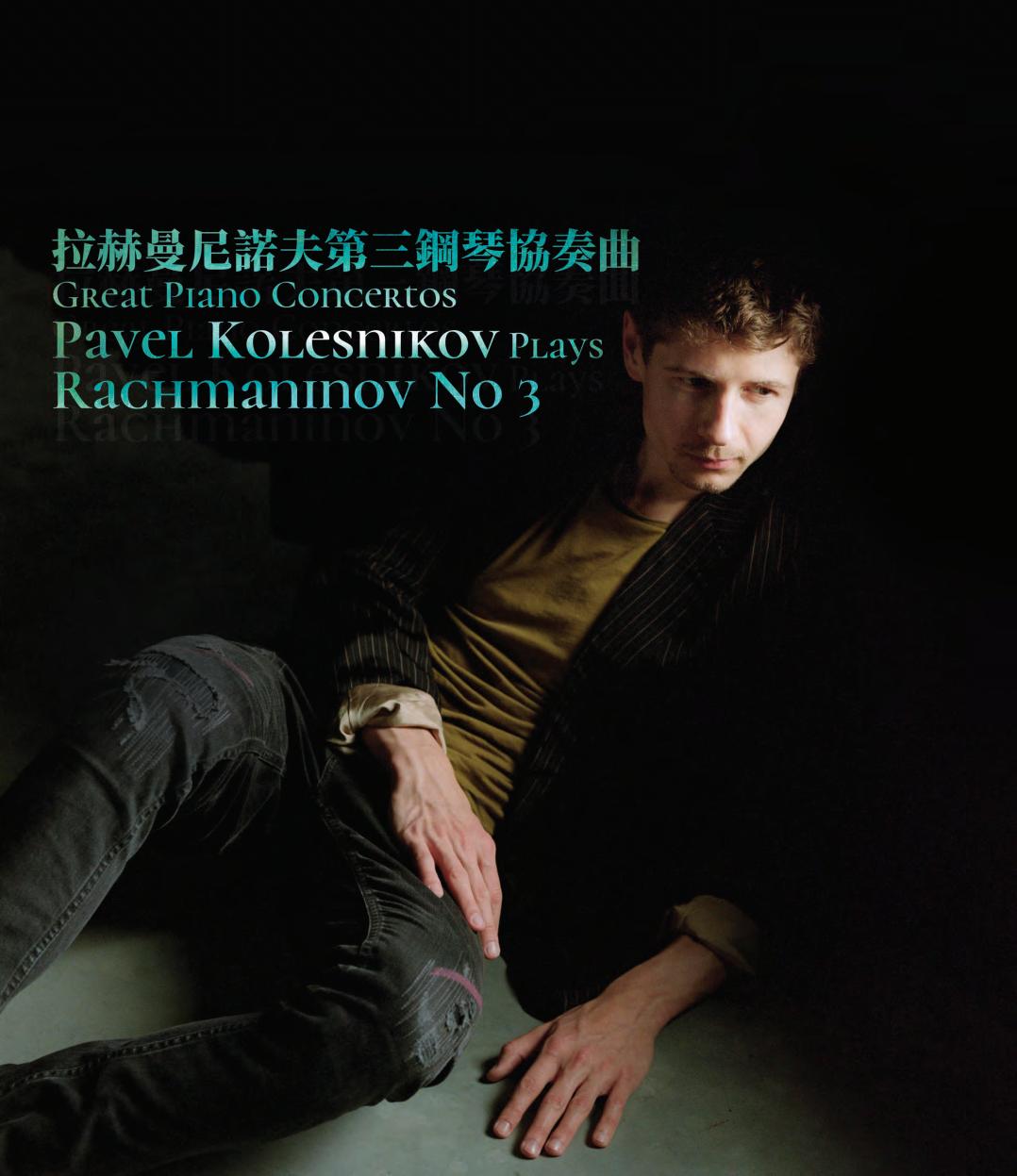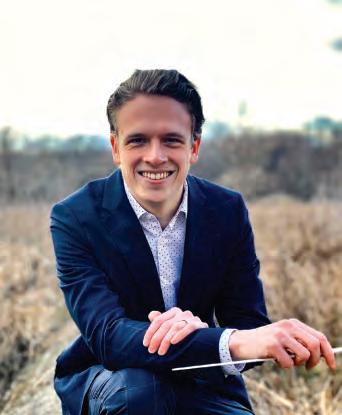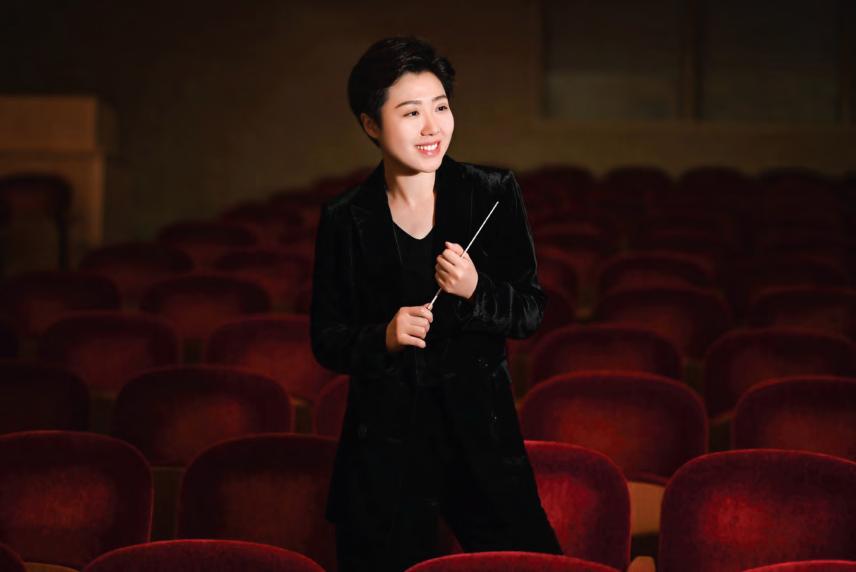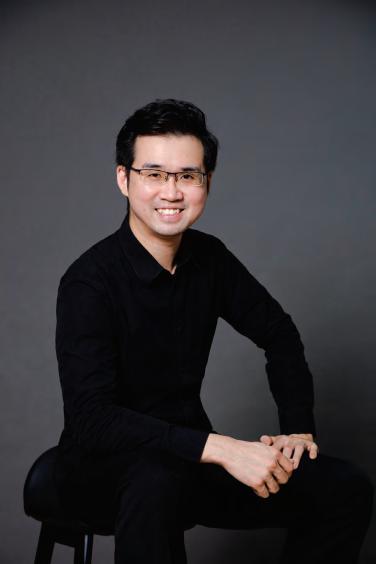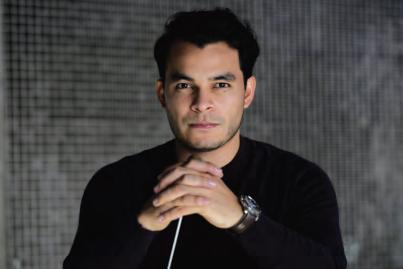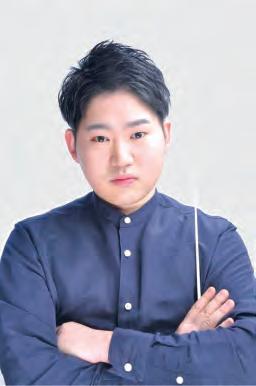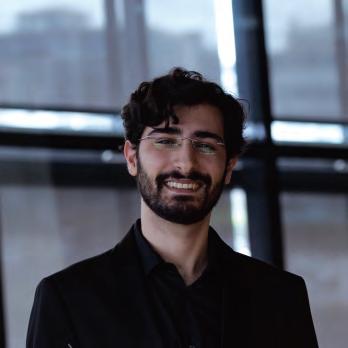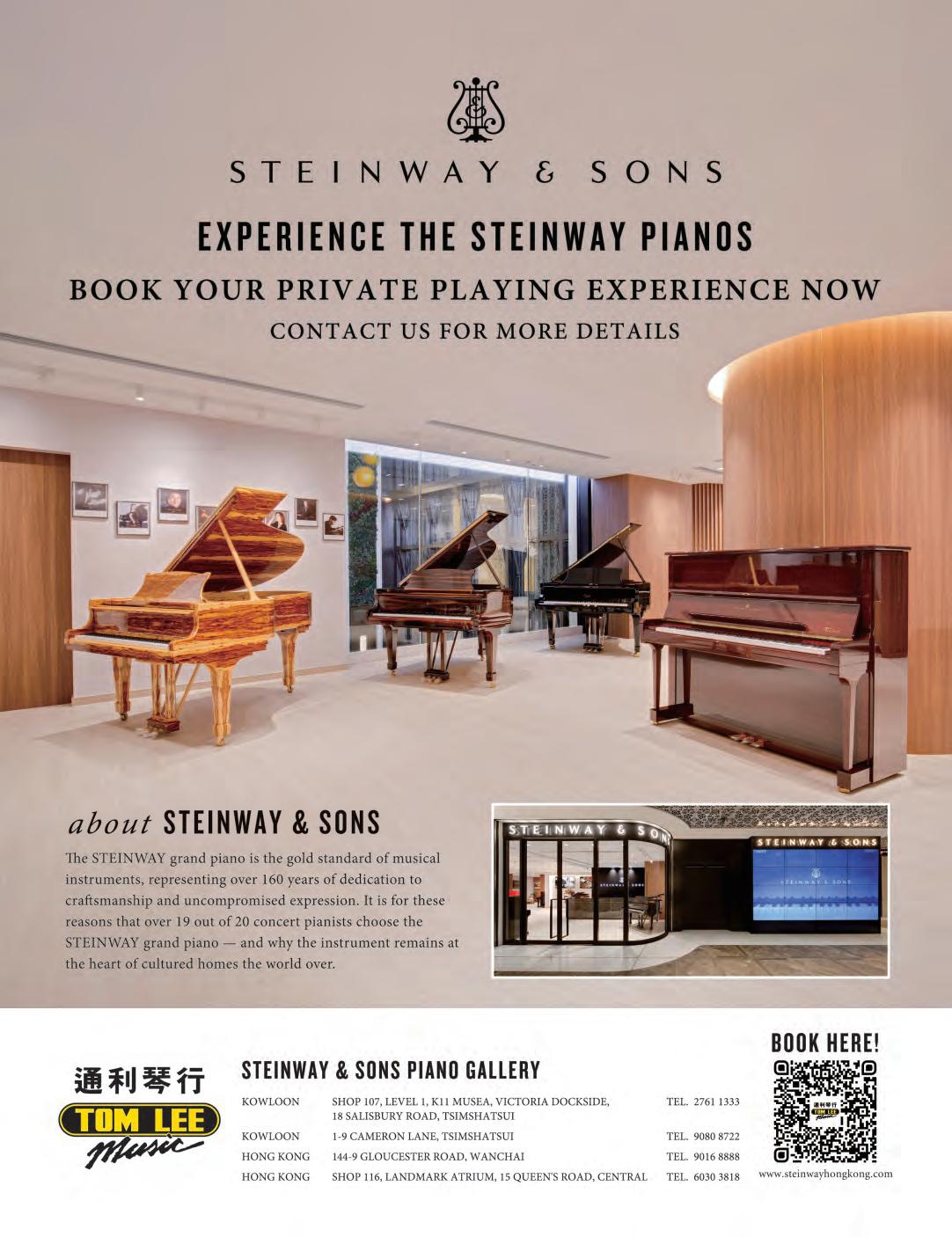


























節目
德布西 D 小調大提琴及鋼琴奏鳴曲
Piano 李嘉齡 Colleen Lee
(駐團藝術家 HKS Artist Associate 2010/2011)

序曲:緩慢、持續而甚為果斷的 小夜曲:適度的活潑 終曲:活潑、輕巧而緊張的
高大宜大提琴奏鳴曲,作品 8 莊嚴而熱情的快板 慢板(充滿感情的) 甚活潑的快板
-中場休息 15 分鐘-
Programme
DebussySonata for Cello & Piano in D minor
Prologue: Lent, sostenuto e molto risoluto
Sérénade: Modérément animé
Finale: Animé, léger et nerveux
KodálySonata for Solo Cello, Op 8
Allegro maestoso e appassionato Adagio (con grand’ espressione)
Allegro molto vivace
– 15-minute intermission –
BrahmsSonata for Piano & Cello No 2 in F, Op 99
Allegro vivace
Adagio affettuoso
Allegro passionato
Allegro molto
場地規則 House Rules
各位觀眾 Dear Patrons : 為了令大家對今次演出留下美好印象,我們希望各位切勿 在場內攝影、錄音或錄影,亦請勿吸煙或飲食。在節目進 行前,請關掉手提電話、其他響鬧及發光的裝置。多謝各 位合作。
In order to make this performance a pleasant experience for the artists and other members of the audience, please refrain from recording, filming, taking photographs, and also from smoking, eating or drinking in the auditorium. Please ensure that your mobile phones and any other sound and light emitting devices are switched off before the performance. Thank you for your kind co-operation.
Hong Kong Sinfonietta
問卷調查 Audience Survey
感謝您蒞臨欣賞香港小交響樂團的演出,現誠邀您提供對是次音樂會的 意見。請登入網頁或於前台索取並填妥問卷,將有機會獲得精美紀念品 一份。
Thanks for coming to our concert! We would love to have your feedback. Please complete our questionnaire online or at the reception for a chance to win a limited edition gift.
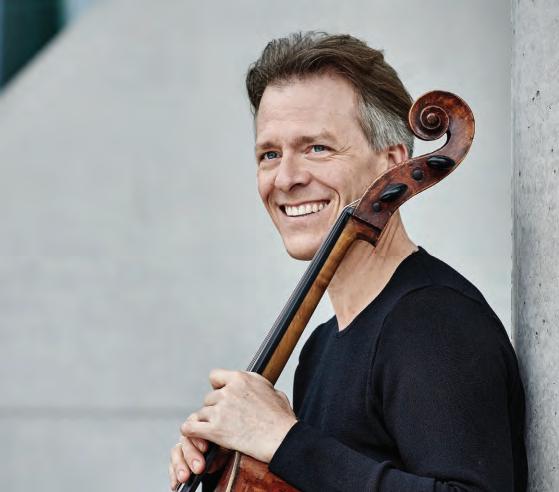
葛哈特的演奏曲目相當廣泛,涵蓋所有主要的協奏 曲,他亦是不少當代作曲家首選的獨奏家。剛獲得 2023 格文美作曲大獎、著名作曲家安德森的大提 琴協奏曲《禱告》,便是葛哈特與法國國家樂團於 2020 年首演。此前他更分別與悉尼交響樂團及柏 林愛樂樂團合作,為澳洲作曲家迪恩的協奏曲作首 演,大獲成功。此外,他又曾與紐約愛樂樂團、瑞 典電台交響樂團及倫敦愛樂樂團等攜手獻演。新樂 季的重點演出包括與香港小交響樂團為安德森的大 提琴協奏曲作亞洲首演,與艾拉斯 - 卡薩多指揮的 明尼蘇達樂團、西蒙娜.楊指揮的西班牙國家樂 團、佩特連科指揮的皇家利物浦愛樂樂團,以及古 爾本基安交響樂團合作。
葛哈特於 1991 年首次與比齊哥夫指揮的柏林愛樂 樂團合作演出,從而展開國際演奏事業。他被公認 為最多才多藝的大提琴家之一,不論是演奏巴赫的 獨奏作品、古典或浪漫時期的名作,乃至與當代作 曲家的合作,均獲得各方高度評價。
葛哈特憑藉高超的音樂造詣、扣人心弦的演奏,以 及對藝術永不止息的極致追求, 30 多年來一直深 受樂迷擁戴。他擅長於熟悉的作品中融入新意念,
亦喜愛鑽研鮮為人知的古典及當代作品,使之於同 儕之中更為別樹一格。
葛哈特曾與多個世界知名的樂團同台演出,包括與 阿姆斯特丹音樂廳樂團、英國及德國所有的電台交 響樂團、柏林愛樂樂團、蘇黎世音樂廳樂團、法國 國家樂團、克里夫蘭樂團、費城樂團、波士頓交響 樂團及芝加哥交響樂團等。合作過的指揮有杜南 憶、馬素、馬其拉、泰利曼、西蒙娜.楊、麥爾 姬、尤洛夫斯基及尼爾森斯等。
葛哈特推出過的錄音皆好評如潮,獲獎無數,當中 收錄陳銀淑大提琴協奏曲的錄音不但獲「BBC 音樂 雜誌大獎」,更入圍 2015 年「留聲機雜誌大獎」。 他經常為 Hyperion 灌錄唱片, 2019 年推出的巴赫
組曲錄音獲《星期日泰晤士報》選為年度百大唱片 之一。最新的錄音作品為蕭斯達高維契的大提琴協 奏曲,與薩拉斯特指揮的科隆 WDR 交響樂團合作 錄製,榮獲 2021 年國際古典音樂大獎。
葛哈特熱愛室樂,他的室樂夥伴包括奧斯博尼,曾 於本樂季隨葛哈特一同到北美演出。此外,他與小 提琴家傑高娃、編舞家烏爾里克森及雕塑家波辛合 作的跨界演出亦於紐約成功首演。
葛哈特亦熱衷與觀眾分享他的新嘗試,他曾在歐美 各地舉辦過演出及工作坊等外展項目,演出不局限 於音樂廳。到訪之處除學校和醫院外,亦包括一些 公共場所及青年懲教所。
葛哈特演奏用是 1710 年由葛弗瑞勒製造的名琴。
Having launched his career with Berlin Philharmonic and Semyon Bychkov in 1991, Alban Gerhardt has since gained recognition as one of the most versatile cellists, highly regarded for his performances from solo Bach through the classical and romantic canon, to collaborations with several contemporary composers.
For over 30 years, Gerhardt has made a unique impact on audiences worldwide with his intense musicality, compelling stage presence and insatiable artistic curiosity. His gift for shedding fresh light on familiar scores, along with his appetite for investigating new repertoire from centuries past and present, truly set him apart from his peers.
Notable orchestra collaborations include the Royal Concertgebouw Orchestra, all of the British and German radio orchestras, Berlin Philharmonic, Tonhalle-Orchester Zürich, Orchestre National de France, as well as the Cleveland, Philadelphia, Boston and Chicago symphony orchestras, under conductors such as Christoph von Dohnányi, Kurt Masur, Klaus Mäkelä, Christian Thielemann, Simone Young, Susanna Mälkki, Vladimir Jurowski and Andris Nelsons.
Gerhardt has a very wide repertoire including all the core concertos, and is at the same time the go-to soloist for contemporary composers. He most recently premiered Julian Anderson’s 2023 Grawemeyer Award-winning concerto Litanies with Orchestre National de France, following on from the success of his performances of Brett Dean’s concerto premiered with Sydney Symphony Orchestra and Berlin Philharmonic, and played with New York Philharmonic, Swedish Radio Symphony Orchestra and London Philharmonic Orchestra, amongst others. The upcoming season highlights
include Minnesota Orchestra with Pablo HerasCasado, Spanish National Orchestra with Simone Young, Royal Liverpool Philharmonic Orchestra with Vasily Petrenko, and Orquestra Gulbenkian. He will also perform the Asian première of the Anderson concerto with Hong Kong Sinfonietta.
Gerhardt has won several awards, and his recording of Unsuk Chin’s Cello Concerto, released by Deutsche Grammophon, won the BBC Music Magazine Award and was shortlisted for a Gramophone Award in 2015. He has recorded extensively for Hyperion; his recording of complete Bach suites was released in 2019 and was one of The Sunday Times’ “Top 100 CDs of the Year” (all genres included). His recent album“Shostakovich: Cello Concertos”with the WDR Sinfonieorchester Kölnand Jukka-Pekka Saraste was awarded the International Classical Music Award in 2021.
Gerhardt is a keen chamber musician whose regular performance partners include Steven Osborne, with whom he will perform in North America this season. He has collaborated with violinist Gergana Gergova, choreographer Sommer Ulrickson, and sculptor Alexander Polzin on the artistic project “Love in Fragments”, a poetic union of music, movement, sculpture and the spoken word, which successfully premiered at 92NY in New York.
Gerhardt is passionate about sharing his discoveries with audiences far beyond the traditional concert hall. His outreach projects undertaken in Europe and the USA have involved not only performances and workshops in schools and hospitals, but also pioneering sessions in public spaces and young offender institutions.
Gerhardt plays a Matteo Gofriller cello dating from 1710.

李嘉齡熱愛室樂,經常於室樂音樂會中演出,她曾 與多位享譽國際的音樂家合作,包括小提琴家寧 峰、姜東錫、大提琴家李垂誼、米勒索特、克亞尼 瑟夫、小號演奏家納卡里亞科夫以及上海弦樂四重 奏等。李嘉齡亦為 2018 年成立的香港電台室樂演 奏家成員。
李嘉齡生於香港,四歲開始學習鋼琴,於香港演藝 學院就讀期間隨黃懿倫學習,後負笈德國漢諾威音 樂及戲劇學院深造,師事瓦迪。她獲得的獎項 包括:第三屆德國賽樂爾國際鋼琴比賽冠軍、 2003 年麥肯齊藝術家成就獎、第 15 屆意大利國際
協奏曲比賽季軍及樂評和觀眾獎,亦是第一屆香港 國際鋼琴比賽、樂府國際音樂大獎、真娜.巴侯雅 國際鋼琴大賽、仙台國際音樂比賽以及第 16 屆西
班牙桑坦德國際鋼琴比賽等項目的獎項得主。
李嘉齡自 2005 年獲得波蘭第 15 屆蕭邦國際鋼琴大 賽第六名後,便正式踏上國際舞台。她頻繁的演奏 足跡遍及歐亞及北美各地,除獨奏演出外,亦經常 與世界知名的樂團合作獻演,包括以色列愛樂、華 沙愛樂、西班牙加利西雅皇家愛樂、日本仙台愛樂 管弦樂團、中國愛樂、廣州交響樂團、武漢愛樂樂 團、上海交響樂團、香港小交響樂團及香港管弦樂 團等。 2010/2011 樂季她獲香港小交響樂團邀請出 任駐團藝術家,亦曾隨樂團遠赴南美、意大利及台 灣巡演。
李嘉齡亦為多個大型音樂節的常客,曾參與的音樂 節包括波蘭蕭邦國際音樂節、格但斯克音樂節、意
大利阿西西音樂節、德國邁森鋼琴音樂節、紐約國 際鍵盤音樂節、鮑登國際音樂節、芬蘭埃斯波音樂 節等。她於第 42 屆香港藝術節中為動畫《魔法鋼琴與
蕭邦短篇》作現場演奏,廣受各界好評。李嘉齡亦曾 兩度受邀於維也納及香港演出「貝多芬鋼琴奏鳴曲馬 拉松」。她又於 2018 年上海音樂學院當代音樂周中以 獨奏者身份與香港創樂團同台演出。近年重點演出 包括與歷圖指揮的倫敦交響樂團合作獻演。
李嘉齡推出過的專輯包括由蕭邦學會發行的蕭邦 全集、史卡拉蒂奏鳴曲全集,以及與香港小交響樂 團合作的《就是古典音樂 3》。
李嘉齡曾獲民政事務局局長頒發嘉許狀,以及獲頒 行政長官社區服務獎狀和香港藝術發展局藝術新秀 獎,以表彰她在音樂領域的傑出成就及在推廣藝術 文化方面的超卓貢獻。
李嘉齡現為香港教育大學的榮譽駐校藝術家,並任 教於香港演藝學院及香港浸會大學。
Since winning the 6th Prize at the 15th International Frederic Chopin Piano Competition, Colleen Lee has performed extensively throughout Asia, Europe and North America in solo recitals and with orchestras such as the Israel Philharmonic Orchestra, Warsaw Philharmonic Orchestra, Galacia Royal Philharmonic Orchestra, Sendai Philharmonic Orchestra, China Philharmonic Orchestra, Guangzhou Symphony Orchestra, Wuhan Philharmonic Orchestra, Shanghai Symphony Orchestra, Hong Kong Sinfonietta and Hong Kong Philharmonic, among others. Lee was the Artist Associate of Hong Kong Sinfonietta in 2010/2011, and has toured with the orchestra in South America, Italy and Taiwan.
She has also been a featured artist at several international music festivals including the International Chopin Festival in Duszniki and Gdansk in Poland, Assisi International Piano Festival in Italy, Meissen Pianoforte Festival in Germany, International Keyboard Festival in New York, Bowdoin International Music Festival and Musicus Fest in Espoo, Finland. Her performance of the “Magic Piano and Chopin Shorts” animation series at the 42nd Hong Kong Arts Festival had garnered rave review. She was invited to perform twice in the “Beethoven Piano Sonatas Marathon” in Vienna and Hong Kong. She appeared as soloist with the Hong Kong New Music Ensemble in the 2018 Shanghai New Music Week. In 2019, she made her début with London Symphony Orchestra under Simon Rattle.
As an enthusiastic chamber musician, Lee frequently appears in chamber music concerts and has also collaborated with world famous instrumentalists including violinists Ning Feng and Kang Dong-suk, cellists Trey Lee, Daniel MüllerSchott and Alexander Kniazev, trumpet virtuoso
Sergei Nakariakov, and the Shanghai Quartet. She is also a member of the RTHK Chamber Soloists which was formed in 2018.
Born in Hong Kong, Lee started her piano lessons at the age of four. Subsequently she was trained at the Hong Kong Academy for Performing Arts (HKAPA) under Eleanor Wong and at the Hochschule für Musik, Theater und Medien in Hannover with Arie Vardi. She won the First Prize at the 3rd Seiler International Piano Competition in Kitzingen, Germany, the 2003 Dorothy Mackenzie Artist Recognition Award, Third Place and Critic and Audience Prizes at the 15th International Competition for Piano and Orchestra in Cantú, Italy, and was a prize winner at the 1st Hong Kong International Piano Competition, the Pro Musicis International Award, Gina Bachauer International Artist Competition, Sendai International Music Competition, and the 16th Santander International Piano Competition in Spain.
Her discography includes an all-Chopin album recorded on the Pleyel Piano released by the Fryderyk Chopin Institute, and a complete Scarlatti Sonatas album by Naxos. She was also featured on the Hong Kong Sinfonietta DECCA album This is Classical Music 3
In recognition of her outstanding achievements in music and in the promotion of arts and culture, she has been awarded Certificate of Commendation by the Secretary of Home Affairs, Commendation for Community Service by the Hong Kong Government and Young Artist Award by the Hong Kong Arts Development Council.
Currently Lee is the Honorary-Artist-in-Residence of The Education University of Hong Kong and on the piano faculty of HKAPA and Hong Kong Baptist University.
今晚的節目,由兩首作於 1915 年的奏鳴曲,配上較它們早近 30 年、明顯來自不同世 代、由布拉姆斯所作的大提琴奏鳴曲兩首之二。布拉姆斯所處的浪漫主義後期,和德 布西及高大宜 20 世紀戰時的處境截然不同,儘管他們都受到前人的啟發。受法國巴羅 克作曲家的影響,德布西原意想為多種樂器創作一組奏鳴曲,但他最終只完成了其中 三首。而高大宜則選擇創作一套無伴奏大提琴奏鳴曲,顯然他是以巴赫的六首大提琴 組曲為楷模,即使三個樂章都反映出匈牙利民歌的影響。這點和他同樣熱衷於收集民 謠的朋友巴托克一樣。
有一幀著名的高大宜照片,展示長著白鬍子的他正看著一個舊式的唱機圓筒喇叭: 他無疑在留心地聽著一些他和巴托克收集的民謠。高大宜出生於匈牙利的凱奇凱梅特 ( Kecskemét ),在鄉郊一直生活到 18 歲。他父親是匈牙利國家鐵路局的站長,主要在 加蘭塔( Galánta ,現�於斯��克�和國)工作。他早年的作品�在學���奏。
1900 年,他遷居到布達佩斯,在李斯特音樂學院隨科斯勒( János Koessler )學藝, 之後接過他衣缽,成為學院的教授。 1905 至 1914 年間,他和巴托克走遍匈牙利各地 收集民謠,邊錄音邊記譜,由此發展出自身顯著的匈牙利音樂風格,和著名的、現在 仍沿用的「高大宜教學法」。他早期的作品充滿了民歌的色彩,包括《夏日黃昏》 (Summer Evening , 1906)和第一弦樂四重奏(1909)。
1918 年,奧匈帝國解體,混亂的匈牙利被逼與奧地利分家,令高大宜頓時在音樂界 失寵。但他仍留在祖國,而不到五年,又和巴托克及杜南憶( Erno ˝ Dohnányi )
一起重新受到重視,並獲邀為慶祝布達佩斯建市 50 周年撰寫了《匈牙利詩篇》
(Psalmus Hungaricus)。自此,他推出了一系列引人注目的合唱作品,以及兩部歌劇: 《哈利.亞諾什》( Háry János , 1926 )—尤為著名的是其組曲,和《紡織屋》( The Spinning Room , 1932 ),以及管弦樂曲《加蘭塔舞曲》( Dances of Galánta , 1933 ) 和《孔雀變奏曲》( Peacock Variations , 1939 )。他一直不懈地工作,直到 1967 年 逝世為止。
在布拉姆斯出版的 25 首室樂作品中,只有五首是弦樂奏鳴曲。其中三首為小提琴而 寫,兩首為大提琴而寫(另外有兩首是為單簧管而寫的奏鳴曲,作品 120 ,有時又被
其他樂器所採用)。兩首大提琴奏鳴曲的寫作年期相差了 20 年。第一首
38 )寫於 1852 至 1865 年之間,其時他還沒有創作大型的管弦樂曲和合唱作品。第二 首 F 大調(作品 99 )寫於 1886 年夏天,是他第一次在瑞士伯恩南部的霍夫斯特滕
(Hofstetten)度假區圖恩湖(Lake Thun)畔度假時所寫的,那時他只完成了一首大型
作品,主要把精力都集中於小型作品上。即便如此,第一首大提琴奏鳴曲有三個樂 章,長約 20 分鐘,而第二首的篇幅更為宏大,有四個樂章,長度也多了約 10 分鐘。第
二奏鳴曲也可能與第一首有直接的關連,因為布拉姆斯在新作之中採用了在 20 年前的 第一首中被棄置了的一個慢樂章構思。
布拉姆斯經常在漫長的暑假時到德國南部、瑞士和奧地利等度假區作曲。他連續三年
前�霍夫斯特�度假區,第二大提琴奏鳴曲就是在那�第一年的作品之一。�時他的 創作速度很快,還完成了他的第二小提琴奏鳴曲(作品 100 )和 C 小調鋼琴三重奏
(作品 101 )。他第二次造訪該地時,撰寫了最後一首管弦樂鉅著,那就是大提琴和小 提琴雙協奏曲。或許之前一年在此創作的大提琴奏鳴曲,提醒了他大提琴是何等美妙 的一種樂器,從而令他為其撰寫了一首協奏曲。
德布西(1862–1918)
序曲:緩慢、持續而甚為果斷的 小夜曲:適度的活潑 終曲:活潑、輕巧而緊張的
1915 年,德布西計劃用一個夏天埋首創作六首回 溯法國巴羅克傳統的奏鳴曲。這一年初,他編訂了 蕭邦和巴赫的小提琴和古鍵琴奏鳴曲,顯然他對舊 風格頗為著迷。
他所構思的「六首多種樂器的奏鳴曲」,乃根據巴 羅克而非古典主義時期的風格而寫,這種奏鳴曲可 包括多於一種樂器,但計劃最終並沒有完成。他在
1915 年 7 月底至 8 月初寫成大提琴奏鳴曲後,又寫 了一首長笛、中提琴和豎琴奏鳴曲和一首小提琴奏 鳴曲,此後便沒有繼續下去了。他原本接下來的計 劃是寫一首雙簧管、圓號和古鍵琴奏鳴曲,一首小 號、單簧管、巴松管和鋼琴奏鳴曲,以及最後一首 為前述這些樂器再加上低音大提琴而寫的奏鳴曲。
但最後這三首並沒有動筆。
大提琴及鋼琴奏鳴曲於 1917 年 3 月 24 日於巴黎舉 行法國首演,德布西擔任首演的鋼琴家,和他合作 的是薩爾蒙( Joseph Salmon )。而真正的世界首
演,則於一年前的 3 月 4 日在倫敦的艾奧利安音樂
廳( Aeolian Hall )舉行,由大提琴家埃文斯 ( Charles Warwick Evans )擔任獨奏,鋼琴伴奏是 霍布迪夫人(Ethel Hobday)。作品題獻給德布西的 第二任妻子艾瑪( Emma ,原姓巴達克 Bardac )。 這是一首微型作品,序曲在變得有點躁動後減慢速 度,結尾和開始時一樣,只是音量極輕。
撥弦帶引下的小夜曲直接進入了終曲,此後對獨奏 者的技巧要求也越來越高,包括跳弓( spiccato ) 和接近指板拉奏的弓法( flautando )、假泛音和表
情滑音( portamenti )。輕快的開首與緩慢而採用 遠系樂調的中段形成對比。表意記號(很特別地) 是「陰沉的」,但幸好它只維持了 11 小節,然後回
到穩定的快步,結尾再減慢下來。
1882–1967)
莊嚴而熱情的快板
慢板(充滿感情的) 甚活潑的快板
高大宜的音樂知識,一部份是靠自學得來。他學過 鋼琴、小提琴、中提琴和大提琴,最後於 1906 年
4 月在布達佩斯的音樂學院獲取博士銜。他的論文 是關於匈牙利的民歌結構。不久,他認識了巴托 克,和他一起開始探索匈牙利的民歌傳統。 1910
年 3 月 17 日,巴托克與瓦爾德鮑爾 - 克爾佩利四重
奏(Waldbauer-Kerpely Quartet)在布達佩斯舉行
了一場音樂會,曲目包括高大宜的第一弦樂四重奏
(作品 2 )、鋼琴作品九首(作品 3 )和大提琴奏鳴
曲(作品 4 )。這首大提琴奏鳴曲配有鋼琴伴奏, 只有兩個樂章,原第一樂章則被高大宜棄置。
1922 年,他嘗試再創作開頭的樂章,卻沒有出
版。 1969 年,高大宜去世兩年後,金茲堡( Lev Ginzburg)將之編訂並以《小奏鳴曲》(Sonatina) 的名稱出版,相信那就是 1922 年改寫的樂章。
五年後,第一次世界大戰蔓延期間,高大宜創作了 無伴奏大提琴奏鳴曲。這是一首不朽的作品, 全長超過半小時,並透過傳統的變格定弦 (scordatura ,又稱 mistuning ,即將樂器定弦至與 慣常不同的音高)技法,營構了獨特的聲音世界, 從而產生一種不安的效果。高大宜把大提琴的兩條 低音弦線調低了半度,最低的 C 弦調成 B ,而 G 弦
則調成升 F 。音樂由三個長篇樂章組成,將巴赫無 伴奏大提琴組曲的精妙和醇厚帶至 20 世紀。高大 宜在每個樂章都摻入了若干民謠調子和演奏技法, 打造了一連串撲朔迷離的音色和旋律肌理。因為戰
爭的原因,首演被延遲舉行,直到 1918 年 5 月 7 日,才由瓦爾德鮑爾 - 克爾佩利四重奏的大提琴家 克爾佩利(作品即題獻給他)作首演。儘管他甚為
推崇這首奏鳴曲,但作品隔了很久才得到聽眾的接 受。現時它已在大提琴的曲目中確立了一席之地, 其非凡的能量和影響力一直都沒有任何減損。
「莊嚴而熱情」的首樂章,開頭的情感標號是堅定 的( risoluto),由重複的四音和弦帶出。之後獨奏
以 8 分音將和弦分割,再接以奔跑的 16 分音。
樂章的音域涵蓋了樂器的五個八度,最終以半音階 的 16 分音下行樂句陷入低處。在進入旋律更為優 美但情感仍然高漲的第二主題前,音樂稍為停頓下 來,然後繼續發展,像與自身對話一般。高大宜的 音樂構思不斷演變,但從不遠離兩個主題。最後是 憂傷的、根據第二主題構成的尾聲,終結時響起了 兩下四音和弦。
第二樂章慢板在最低的音區展開,陰沉且充滿思 緒。一個具有裝飾音的旋律在樂器的高音區域對之 作出回應:那是一個孤獨的民歌手,或許身在一處 禁地,在低音的撥弦伴奏下歌唱。這兩個對比段落 交替發展,直至音樂突然衝前到稍快的(Con moto) 中段,技巧難度變得更高,且滿腹牢騷。它雖然短 促,卻影響了回歸的主題及其演繹的方式,有時像 匈牙利揚琴( cimbalom )獨特的撥弦那樣發聲。 接著來到另一個蒼涼的尾聲,最後以下行滑音 (glissando)的方式,發出了絕望的哀嘆。
高大宜把所有元素都匯聚於終曲,從開始便加入 了一個充滿感染力的舞蹈節奏,配上一個輕狂的主 題,嘗試讓它�發。�個民謠調子在這�出現,� 如一個典型的風笛嗡鳴,意氣高昂地盤繞,一個如 齊特琴( zither )一般的撥奏,和木管樂刺耳的聲 音。所有都聚集在一起,其繁複的節奏會令最有經 驗的舞者也手忙腳亂。長篇的中段像在提出疑問, 大提琴的音符漸漸透過琶音膨脹,並以靠近琴碼拉 奏的方式(sul ponticello)帶出詭異的效果,聲音 由此變得更為破碎。舞蹈的節奏再次逼近,讓樂章 和奏鳴曲發展成盤繞的高潮,結尾包括一段熾熱的 撥弦段落和衝刺,最後一頭撞進結束的低音。
)
活潑的快板 深情的慢板 熱情的快板 甚快板
毫不奇怪地,布拉姆斯大概也想為大提琴家豪斯曼 ( Robert Hausmann )寫點甚麼。他寫信給在維也
納的朋友費琳格(Maria Fellinger),建議她從柏林
邀請豪斯曼過來。她答應了他的請求。 1886 年 10 月 29 日,在費琳格的家中,布拉姆斯為豪斯曼 作伴奏,試奏了一遍他的 F 大調奏鳴曲。不到一個
月後,在 11 月 23 日,即公開首演前一天,他們又
在比爾洛特( Theodor Billroth )的家中排練了一 次。豪斯曼後來把樂譜帶回柏林給布拉姆斯的密友 赫佐根貝格夫人( Elisabeth von Herzogenberg ) 看,她熱切地寫道:
「至此,第一樂章最令我激動。它是壓縮得那 麼的高妙,其進程那麼的像激流,發展部是那 麼的簡潔,而第一主題的擴展在回歸時則最令 人驚喜。我不需要告訴你我們是多麼的享受那 個柔和、旋律優美的慢板⋯⋯我想聽你彈奏本
�上�有活�的諧謔曲��的,在我的�� 我聽到你在彈奏時的鼻息和噴氣的聲音⋯⋯」
早期的聽眾對第二奏鳴曲的反應卻較為謹慎,即使
它吸引了專業的支持者,包括荀伯格。他後來評論 第一樂章時說:「所有的重複都是為了進一步推進 發展的。」
類似交響曲規模的「活潑的快板」以一段重要的 (或不尋常的)顫音( tremolando )動機展開。大 提琴開首跳躍的主題由鋼琴的顫音所支持,在發展 部又再次提供類似的伴奏。大提琴在呈現部重複段 的末尾接過顫音。如此兩種樂器都透過輕巧的互動 展開了尖銳的樂章。相反,升 F 小調的發展部是神 秘、安靜而充滿疑問的,所有的尖銳性都消失了。
音樂變得更為詭異,大提琴深沉的顫音現在支持著 鋼琴的和弦,直至一段光明的段落引進了再現部。
它帶出了甜美銷魂和深情的段落,之後突然奏起了 最後五個響亮的小節。
如果第一樂章的特色是顫音,那麼升 F 大調慢樂章 的特色則是大提琴的撥弦,它既為鋼琴伴奏,也獨 立於鋼琴的主題之外。大提琴手之後拿起琴弓,抵 抗鋼琴的主題,繼續他的拉奏,而鋼琴則模仿起大 提琴開頭的撥弦。隨後的第二主題把音樂轉成 F 小 調,接著回到升 F 大調,讓大提琴的撥弦 16 分音穩 定地向低音域下降。到了末尾,大提琴才接過鋼琴 開首的旋律,聲音既痛苦又哀怨,而最後一段撥弦 則把樂章引向柔和而銷魂的終點。
C 小調諧謔曲是個有份量的樂章,鋼琴以四個獨奏 小節帶出了滂沛的音符。高潮起伏,樂器一起升升 沉沉:如果這�有「諧謔的」��,那麼它也是� 肅的那種。然而在 F 大調的中段,樂章得到了甜美 的喘息。大提琴一直哄引鋼琴奏出和諧如水流般的 8 分音。中段在重複過後,回到預期的諧謔曲, 令這樂章的篇幅像慢樂章一樣長。
終曲是全曲最短的樂章。雖然節奏標號是「甚快 板」,但感覺上卻頗為和緩輕鬆,就像布拉姆斯四 樂章的第二鋼琴協奏曲那樣。大提琴在這個樂章帶 頭奏起迴旋曲主題,然後再由鋼琴接過。主題經過 了好幾個變化,包括中間格調相當不同的降 B 小調 插曲。大提琴的撥弦顯示音樂快要回到大調(但頗 不尋常地以降 G 大調展開),而兩種樂器隨後也在 最後的若干小節交替奏起了迴旋曲主題。
英文節目介紹: Nick Breckenfield 英國作家 Nick Breckenfield 專門撰寫節目介紹,
曾任 whatsonwhen.com 的古典音樂及歌劇版編輯 13 年, 現於支持青年音樂家的博萊蒂-布托妮信托基金會工作。
Two sonatas composed in 1915 tonight counterbalance the second of Brahms’ two cello sonatas, composed just under 30 years earlier, from a very different world: Brahms’ late Romantic milieu a contrast to the early-20th century wartime sonatas by Debussy and Kodály, despite their inspiration in the past. For Debussy it was French Baroque composers behind his idea to compose a set of sonatas for various instruments, even though he completed only three of them. In Kodály’s case, choosing to write just for the cello without accompaniment, it was clearly Bach’s six Cello Suites he used as a model, although all three movements also betray Hungarian folk influences, which had become Kodály’s main focus, along with his friend and folk collecting compatriot, Béla Bartók.
A famous picture of the white bearded Kodály has him peering into an old gramophone horn: listening, no doubt, to some of the folk songs he and his colleague Bartók had collected. Kodály was born in Kecskemét and lived the first 18 years of his life in the Hungarian countryside, where his father was a stationmaster for the Hungarian State Railway, mainly in Galánta (which is now in the Slovak Republic). His early compositions had been played at school, and in 1900 he moved to Budapest to study at the Franz Liszt Academy of Music under János Koessler, whom he later succeeded as professor. Between 1905 and 1914 he and Bartók travelled around Hungary recording and notating folk music, from which he developed not only his own definitely Hungarian musical flavour but also the famous teaching method still used today – the “Kodály Method”. The first of his works imbued with these folk idioms included Summer Evening (1906) and the First String Quartet (1909).
The events of 1918 – with the turmoil of Hungary being wrenched away from Austria – left Kodály out of favour, but he remained in his homeland, and within five years along with Bartók and Dohnányi he was sufficiently rehabilitated to be invited to write a work to celebrate the 50th anniversary of the foundation of Budapest, his Psalmus Hungaricus . From then on, he produced a remarkable canon of particularly choral works, as well as two “operas”: Háry János –most famous from the suite – in 1926 and The Spinning Room in 1932, the orchestral Dances of Galánta (1933) and the Peacock Variations (1939). He worked until his death in 1967.
Out of Brahms’ 25 chamber works only five are string sonatas: three for violin and two for cello (and only two others in total, for clarinet Op 120, sometimes adopted by other instruments). The two for cello are separated by 20 years. The first, in E minor Op 38, was composed between 1852 and 1865, before his main large-scale orchestral and choral works. His second, in F Op 99, was composed in the summer of 1886 in Switzerland on Brahms’ first visit to Hofstetten, Lake Thun, south of Bern, after all-but-one of his major big works had been completed, and from which time he concentrated on smaller forces. Having said that – in contrast to the First Cello Sonata, in three movements and lasting around 20 minutes long – the Second is bigger in scale, with four movements and some 10 minutes longer. Brahms may also have looked to the past for his Second Sonata, as there may be a direct link to his earlier cello sonata, in that Brahms returned to a slow movement idea he had discarded over 20 years earlier for his First Sonata to use in his Second.
Brahms had long taken to composing on extended summer breaks across southern Germany, Switzerland and Austria. His Second Cello Sonata was one of the first fruits of his first of three consecutive visits to Hofstetten. For once composition came quickly and he also finished his Second Violin Sonata, Op 100 and the C-minor Piano Trio, Op 101. On his second visit he composed his last major orchestral work, the Double Concerto for Cello and Violin. Perhaps the composition of the Cello Sonata the previous year had reminded him what a wonderful instrument it is and turned his mind to write a concertante work for it.
Claude Debussy (1862–1918)Prologue: Lent, sostenuto e molto risoluto
Sérénade: Modérément animé
Finale: Animé, léger et nerveux
In 1915 Claude Debussy spent a summer engrossed in composing what he hoped would be six sonatas, looking back to the French Baroque. Earlier that year he had edited both Chopin and Bach’s violin and clavecin (harpsichord) sonatas and he was obviously enamoured of the old styles.
His idea for “six sonates pour divers instruments”, based on the Baroque rather than the Classical notion of a sonata, which could include more than one instrument, was never completed. After the Cello Sonata, composed in late July and early August 1915, he composed his Flute, Viola and Harp Sonata and then a Violin Sonata, but that was as far as it went. The next would have been a sonata for oboe, horn and clavecin, then one for trumpet, clarinet, bassoon and piano, with a final one for all the instruments he had already used plus a double bass. But none of these last three were composed.
Debussy was the pianist in the first French performance of the Cello Sonata, partnering Joseph Salmon in Paris on 24 March 1917, although the actual world première had taken place at London’s Aeolian Hall just over a year before, on 4 March 1916, given by cellist Charles
Warwick Evans and pianist Ethel Hobday. Dedicated to Debussy’s second wife, Emma ( née Bardac), it is a diminutive work, with the Prologue becoming somewhat agitated before eventually slowing to end as it had begun, although now pianissimo
The pizzicato-led Sérénade leads directly into the Finale with evermore demands on the soloist’s technique, including spiccato and flautando bowing, false harmonics and portamenti Its opening jauntiness is contrasted with a distantkey Lento central section, marked (notably) “morbid” which, mercifully, lasts barely 11 bars, before regaining its fleet-footed surety, until a slowing at the very end.
Allegro maestoso e appassionato
Adagio (con grand’ espressione)
Allegro molto vivace
Kodály, who– partly self-taught– took up the piano, violin, viola and cello, eventually studied at Budapest’s Academy of Music up to PhD level, awarded in April 1906 for his thesis about the structure of Hungarian folk song. Shortly thereafter he met Bartók and their joint exploration into folk traditions began. On 17 March 1910, Bartók, along with the Waldbauer-Kerpely Quartet, gave a concert in Budapest which included Kodály’s First String Quartet, Op 2, his Nine Pieces for Piano, Op 3 and the Cello Sonata, Op 4. That Cello Sonata is one with piano accompaniment, just two movements as Kodály had discarded its first movement. In 1922 he attempted to recompose an opening movement but left that unpublished. What in 1969, two years after Kodály’s death, was published as his Sonatina edited by Lev Ginzburg, is thought to be that 1922 movement.
Five years later, now in the midst of the First World War, Kodály composed his solo Cello Sonata. It is a monumental work – over half an hour in length – and creates its own distinct soundworld by the old technique of scordatura , which means “mistuning”, where strings are tuned differently to create an unsettling effect. In Kodály’s Cello Sonata’s case, the cello’s bottom two strings are tuned down a semitone: the lowest from C to B and the G string to F-sharp. The music, cast in three long movements, brings the rarified beauty of Bach’s solo cello suites into the 20th century, and Kodály infuses each movement with various folk idioms and playing techniques to offer a bewildering variety of timbres and melodic textures. Because of the war, the première was delayed, and it was only first performed on 7 May 1918 by the cellist of the Waldbauer-Kerpely Quartet, Jeno Kerpely, to whom it was dedicated. Despite his advocacy it
took a long while to catch on, but now it has become an established part of a cellist’s repertoire and has lost nothing of its extraordinary power and potency.
Repeated quadruple-stopped chords (four notes played together), marked risoluto and first separated by solo quavers then running semiquavers, open the “majestic and passionate” first movement. Developed across the whole of the instrument’s five-octave range, it eventually subsides to the depths in a chromatic semiquaver descent, pausing before the more melodic but still emotionally charged higher second subject, which develops as if in dialogue with itself. Kodály’s musical invention spirals off at tangents, but never too far away to lose sight of either of the main themes, eventually ending in melancholic vein in a coda based on the second theme with two final quadruple-stopped chords.
The central Adagio opens low in the deepest register, sombre and brooding, answered by an ornamented melody high in the instrument’s tenor clef range: a lone folk singer, perhaps, in a forbidding landscape, underpinned by low pizzicato notes. These two contrasting sections are developed in turn until the music suddenly rushes headlong into a central Con moto section, more virtuosic and querulous. However short-lived it affects the returning main themes and the way they are treated, where sometimes it sounds as if the distinctive sound of the cimbalom’s struck strings is heard, leading to another bleak coda , with a final despairing sigh in the form of a downward glissando
Kodály throws everything at the Finale , infused with an infectious dance rhythm right from the start, with a flighty theme trying to burst forth. Here various folk timbres are evoked– a typical drone of a bagpipe in all its swirling glory, a zitherlike strumming, and a rasping woodwind sound–all coming together in a rhythmic display that would defy all but the most expert folk dancers. There is a long central questing section– the cello figuration all gradually swelling arpeggios and eerie
sul ponticello effects, with the bow close to the bridge– bring a more brittle sound. The dance rhythms crowd in again allowing the movement and sonata to build to a swirling climax, including a feverish pizzicato section and a rush to the end, with a final plunge to the low last note.
Johannes Brahms (1833–1897)Allegro vivace
Adagio affettuoso
Allegro passionato
Allegro molto
Not unusually, Brahms probably had someone in mind when he started composing his Second Cello Sonata: the cellist Robert Hausmann. He wrote to his friend Maria Fellinger in Vienna to suggest inviting Hausmann from Berlin, which she duly did. At her home on 29 October 1886 Brahms accompanied Hausmann in a run-through of his F major Cello Sonata. Barely a month later, on 23 November, a further run-through at Theodor Billroth’s preceded the public première the following day. Hausmann took the score back to Berlin and showed it to Brahms’ friend and confidante, Elisabeth von Herzogenberg, who wrote enthusiastically:
“So far, I have been most thrilled by the first movement. It is so masterly in its compression, so torrent-like in its progress, so terse in the development, while the extensions of the first subject on its return comes as the greatest surprise. I do not need to tell you how we enjoyed the soft, melodious Adagio... I should like to hear you play the essentially vigorous Scherzo – indeed, I hear in my mind’s eye you snorting and puffing away at it...”
As it happened early audiences were somewhat circumspect about the Second Sonata, even if it attracted expert supporters, including Arnold Schoenberg who later commented about the first movement that “nothing is repeated without promoting development”.
The quasi-symphonic sweep of the Allegro vivace opens with an important, if unusual, musical motivic force: the tremolando. The cello’s opening leaping theme is underpinned by piano tremolandi and it returns to accompany the development, the cello having adopted it towards the end of the repeated exposition. That had unfolded into a strident movement with deft interplay between both instruments. By contrast the development, in F-sharp minor mode, is mysterious, hushed and quietly questing, all stridency spent. The music becomes even more eerie, the cello’s deep tremolandi now underpinning piano chords before a brighter turn ushers in the recapitulation, leading to a sweetly rapt and fond passage that suddenly leads to five resoundingly loud final bars.
If the opening movement had been characterised by the tremolando, then its counterpart in the slow F-sharp major movement is the cello’s pizzicati , that seems to both accompany and be independent of the piano theme. The cellist takes up his bow and, resists the piano theme, continues with his own, while the piano apes the cello’s opening pizzicati. A second theme proper turns to F minor and the return to F-sharp major sees the cello pizzicato semiquavers steadily descend in pitch. Only towards the end does the cello assume the piano’s opening melody – achingly and plaintively – as one last passage of pizzicati leads to the gentle and rapt close.
The C minor Scherzo is substantial, with the piano introducing the surging material in four solo bars, before the cello joins. Climaxes rise and fall, the instruments ebbing and flowing together: if there is a “joke” (the original meaning of “ scherzo ”) then it is a serious one. However, sweet respite is at hand in the F major Trio, the cello at its most cajoling under the piano’s concert quaver rippling. It is repeated before the expected return to the Scherzo which makes for a movement almost as long as the slow one.
The Finale, by far the shortest movement, feels–despite its Allegro molto marking– more genial and relaxed: a similar effect to Brahms fourmovement Second Piano Concerto. The cello takes the lead, before the piano takes over the rondo theme, which undergoes various adventures including a central episode in B-flat minor with a distinctly different musical demeanour. Cello pizzicati indicate that a return shortly to the major will take place (unusually, to start, in G-flat major), as the rondo theme gets passed between the instruments into the final bars.
© Nick Breckenfield, 2023 British programme-note writer Nick Breckenfield was the Classical Music and Opera Editor for whatsonwhen.com for 13 years and now works for the Borletti-Buitoni Trust which awards young classical music artists

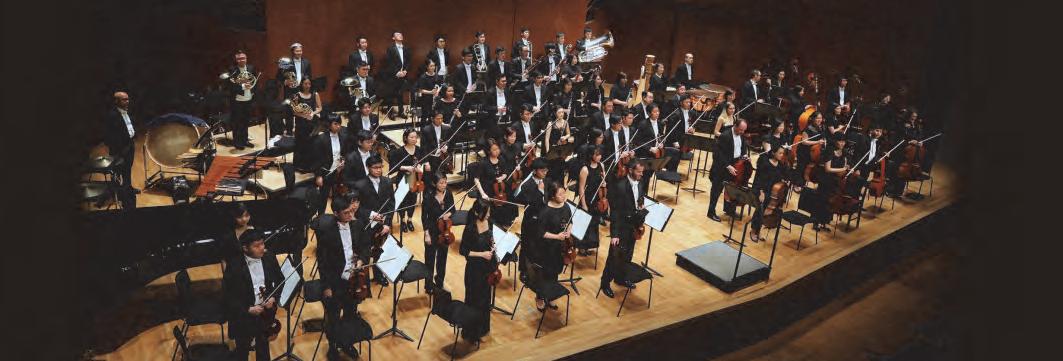
桂冠音樂總監 Music Director Emeritus: 葉詠詩 YIP Wing-sie
候任音樂總監 Music Director Designate: 柏鵬 ChristophPOPPEN
香港小交響樂團是香港的旗艦樂團之一,銳意 「培育文化新一代」,並以富創意的節目及充滿熱忱 的演奏稱譽本地及海外樂壇。
自 1999 年起,與香港小交響樂團合作過的國際知
名音樂家及藝團包括阿爾斯達德、法蘭、格林高 特、赫姆森、麥米蘭、納卡里亞科夫、彭德雷茨 基、凱拉斯、塞伊、薛高維茨基、英國皇家芭蕾舞 團、英國國家芭蕾舞團、美國芭蕾舞劇院、紐約市 芭蕾舞團、斯圖加特芭蕾舞團及翩娜.包殊烏珀塔 爾舞蹈劇場等。樂團亦經常應邀與香港藝術節、法 國五月、香港芭蕾舞團等合作。
樂團自 2009 年起為香港大會堂的場地伙伴,除了 傳統的管弦樂章,樂團於過去 20 年,委約本地及 海外作曲家創作超過 70 首作品。樂團並於 2006 年 起舉辦「駐團藝術家」計劃,培育新一代本地藝術 家之餘更為古典音樂創造新的可能性。樂團又與不 同界別的藝術家製作了不少大獲好評的跨界節目, 包括《士兵的故事》、《一屋寶貝音樂廳》和
《阿飛正轉》等。 2020 年推出音樂會電影系列
《 Back On Stage 》,成為首個躍進戲院的本地樂 團。 2021 年,樂團與 MOViE MOViE 聯合呈獻
「Life is Art 盛夏藝術祭」電影節,帶來音樂新看法。
而針對不同觀眾的多套普及音樂會,包括《寶寶 / 幼兒愛音樂》、《古典音樂速成》、《古典音樂知多 少》和《我個名叫麥兜兜.古典音樂小計劃》等節 目,以及近年推出的網上室樂系列,於香港別具特
色的旅舍拍攝的《Tiny Galaxy Concerts 》,亦為古 典音樂注入新色彩。樂團灌錄過多套唱片,收錄不 少華人作曲家的優秀作品;由 DECCA 發行的三輯 《就是古典音樂》系列,均獲白金及金唱片佳績。
雙 CD 《一屋寶貝音樂廳》於 2018 年由 DECCA 出版。
樂團經常應邀作客海外,包括:美國紐約林肯中心 羅斯劇院、加拿大多個以出色音效著稱的音樂廳; 南美洲的巴西、阿根廷及烏拉圭;在歐洲計有法國 的拉羅克.昂迪榮國際鋼琴音樂節和蒙頓音樂節 等、德國東弗里斯蘭「浪潮」音樂節、波蘭貝多芬 復活節音樂節、意大利布雷西亞及貝爾加莫國際音 樂節、葡萄牙馬爾旺國際音樂節、立陶宛的兩個音 樂節、瑞士蘇黎世、日內瓦和弗里堡;北京中國交 響樂之春(國家大劇院)、中國上海國際藝術節/世 博會、日本《》音樂祭及亞洲交響樂團音 樂節、韓國統營國際音樂節、新加坡、台灣巡演 等。 2018 年舉辦第一屆香港國際指揮大賽,參賽 者來自 49 個國家及地區,成功吸引國際目光。 2023 年 3 月,將會舉行第二屆指揮大賽。
樂團 2002 年至 2020 年由著名指揮家葉詠詩擔任音 樂總監,期間致力推動本地古典音樂發展。葉詠詩 2020 年起出任樂團桂冠音樂總監,與首席客席 指揮暨候任音樂總監柏鵬一起負責樂團藝術發展事 宜。柏鵬將於 2023 年 4 月正式出任樂團的音樂 總監。
One of Hong Kong’s flagship orchestras, Hong Kong Sinfonietta has achieved significant local and international recognition for its passionate performances and innovative programming which have brought music closer to the community. Since 1999, Hong Kong Sinfonietta has collaborated with an illustrious array of international musicians and groups, including in recent years Nicolas Altstaedt, Vilde Frang, Ilya Gringolts, Martin Helmchen, James MacMillan, Sergei Nakariakov, Krzysztof Penderecki, JeanGuihen Queyras, Fazıl Say, Dmitry Sitkovetsky, The Royal Ballet, English National Ballet, American Ballet Theatre, New York City Ballet, Stuttgart Ballet and Tanztheater Wuppertal Pina Bausch. A regular participant at all the major festivals in Hong Kong including the Hong Kong Arts Festival and French May Arts Festival, the orchestra also partners regularly with Hong Kong Ballet in their staged productions.
As an avid believer of keeping music alive and contemporary, Hong Kong Sinfonietta – the Venue Partner of the Hong Kong City Hall since 2009 –performs year-round with over 100 performances a season, presenting not only standard orchestral repertoire but also more than 70 newly commissioned works over the past 20 years, as well as launching in 2006 the HKS Artist Associate scheme, which provides a platform for intensive collaboration with local artists from different arts disciplines to expand the horizon of classical music. The orchestra has enjoyed many triumphs with cross-genre productions such as A Soldier’s Story, The Passage Beyond in Concert and Pica Pica Choose , which melded dance and theatre with music to wide critical acclaim. It also became the first local orchestra to appear on the cinema screen in 2020 with its groundbreaking Back On Stage concert film series, and in 2021 further ventured into the cinematic world by co-curating the “Life is Art” film festival with MOViE MOViE.
Always breaking down barriers between music and the general audience, Hong Kong Sinfonietta holds specially-designed concert series for different audiences and age groups, including Good Music for Babies/Kids, Short-cut to Classical Music,Know Your Classical Music and HKS McDull Music Project , and recently filmed the Tiny Galaxy Concerts online series featuring chamber music
performances recorded at a fascinating hostel in Hong Kong. The orchestra’s discography includes CDs of works by Chinese composers on HUGO, and three double-CD albums This is Classical Music on DECCA which have been awarded Platinum and Gold Records. In 2018, The Passage Beyond in Concert by Leon Ko, was released on DECCA.
Thriving on its strong local roots combined with an ambitious international vision, Hong Kong Sinfonietta has been invited to perform on tour in North America in Canada and New York City; in Brazil, Argentina and Uruguay in South America; in Europe at prestigious festivals in France including Festival International de Piano La Roque d’Anthéron and Festival de Musique Menton, in Germany at Gezeitenkonzerte Ostfriesland, at Beethoven Easter Festival in Poland, in Switzerland at Tonhalle Zürich, Geneva Victoria Hall and Fribourg, at festivals in Italy including the Festival Pianistico Internazionale di Brescia e Bergamo, in Portugal at the Marvão International Music Festival, and in Lithuania; in China at China Shanghai International Arts Festival (Expo 2010), in Beijing at the National Centre for the Performing Arts; in Japan at La Folle Journée and Asia Orchestra Week; in Korea at the Tongyeong International Music Festival and in Singapore at the Esplanade, and at National Concert Hall Taipei and National Taichung Theater. In 2018, the orchestra organised the 1st Hong Kong International Conducting Competition, which attracted 310 applications from 49 countries/regions. The 2nd Competition will take place in March 2023.
Hong Kong Sinfonietta has gone from strength to strength under the direction of Yip Wing-sie – one of Asia’s most respected conductors who was the orchestra’s Music Director from 2002-2020 and Music Director Emeritus since 2020. She remains responsible for the artistic development of the orchestra alongside Principal Guest Conductor and Music Director Designate Christoph Poppen, who will officially begin his term in April 2023.
香港小交響樂團有限公司是註冊之慈善團體。
The Hong Kong Sinfonietta Limited is a registered charity. 香港灣仔譚臣道
3/F Winsan Tower, 98 Thomson Road, Wanchai, Hong Kong
電話 Tel :(852) 2836 3336
電郵 Email:enquiries@hksinfonietta.org
網址 Website:www.HKSL.org
98 號運盛大廈 3 樓
桂冠音樂總監 Music Director Emeritus: 葉詠詩 YIP Wing-sie
候任音樂總監 Music Director Designate: 柏鵬 ChristophPOPPEN
HKS Artist Associates
何博欣 Vivian HO (2022-2023)
鄺展維 Charles KWONG (2020-2022)
麥兜 McDull (2019-2020)
高世章 Leon KO (2018-2019)
陳慶恩 CHAN Hing-yan (2016-2018)
石家豪 Wilson SHIEH (2015-2016)
朱�� CHU Pak-him (2014-2015)
麥淑賢 MAK Su-yin (2014-2015)
羅詠媞 Wendy LAW (2013-2014)
盧思泓 LOO Sze-wang (2012-2013)
伍宇烈 Yuri NG (2011-2013)
李嘉齡 Colleen LEE (2010-2011)
黎志華 Jason LAI (2009-2011)
楊嘉輝 Samson YOUNG (2008-2009)
伍卓賢 NG Cheuk-yin (2006-2008)
小提琴 Violin
格德霍特
樂團首席
金仁善
署理助理樂團首席
李海南
第二小提琴首席
蔡柏沂
陳劭楠
周止善
蔡君賢
顧洛臻 羅莎莉
呂灝然
羅蔚敏 彭曉筠 潘迦薇
陽旻佑
楊宇思
★李威霖 ★梁嘉俊
James CUDDEFORD
Concertmaster
KIM In-sun
Acting Assistant Concertmaster
LE Hoai-nam PrincipalSecond Violin
CAI Pak-yi
CHAN Shaw-nan Sharon
Kiann CHOW
CHUA Vince Eliezer N.
John KRUER
Sally LAW
Ambrose LUI
LUO Wei-min
PANG Hiu-wan
POON Ka-mei Camille
YANGMin-yu
YANGYu-si
William LEE
LEUNG Ka-chun
YEUNG Kin-man Sunny
Elvis CHAN
LAU Sum-yin
Christina BEAN
Ringo CHAN
LUNG Kwan-wai Kenny
NGAN Sing-on
TANG Wing-shuen Rebecca
長笛 Flute
○上杉晃代
雙簧管 Oboe
◆薛宇曦
福原真美
單簧管 Clarinet
●方曉佳(休假)
○陳秋媛
■馮智恆
巴松管 Bassoon
◆歐啟詩
田口美奈子
圓號 Horn
●包文慶
東出真澄
岑慶璋
陳珈文
小號 Trumpet
●黃山
文曦(休假)
■陳健勝
長號 Trombone
●羅澤基 陳學賢
Akiyo UESUGI
SZE Yu-hey Kenneth
Mami FUKUHARA
FONG Hiu-kai Johnny (on leave)
CHEN Chiu-yuan
FUNG Chi-hang Eric
AU Kai-see Tiffany
Minako TAGUCHI
PAW Man-hing Hermann
Masumi HIGASHIDE
SHUM Hing-cheung
CHAN Kar-man Cheryl
HUANG Shan
MANHay (on leave)
CHAN Kin-sing Kinson
Christopher RODGERS
CHAN Hok-yin
低音長號 Bass Trombone 江子文(休假)
大號 Tuba
●林榮燦(休假)
大提琴 Cello
CHANG Pei-chieh
Laurent PERRIN
HO Kwok-chee Karey
LEE Eun-sol
PARK Si-won
YIP Chun-hei Eric
Masami NAGAI
Santiago COSTA
MARTÍNEZ (on leave)
HUANG Tun-pin
定音鼓 Timpani
●村本曉洋
敲擊樂 Percussion
●周展彤
小山理惠子
豎琴 Harp
●黃士倫
鍵琴 Keyboard
●朱偉恆
KONG Tze-man Jason (on leave)
LAM Wing-tsan (on leave)
Akihiro MURAMOTO
CHAU Chin-tung
Rieko KOYAMA
Ann HUANG Alan CHU
●首席 Principal
Assistant Principal
○署理首席 Acting Principal
Acting Assistant Principal
◆客席首席 Guest Principal
■客席樂師 Guest Musician
★ Orchestral Associate
監察委員會 潘燊昌博士(主席) 翟紹唐先生(副主席) 鍾思源醫生(司庫) 周莉莉女士 鍾陳碧璋女士 何汝祥醫生 劉文文女士 劉勵超先生 陳智文先生 徐行悅醫生 黃偉雄先生 阮偉文博士
Board of Governors
Dr Patrick S C POON (Chairman)
Mr JAT Sew-tong (Vice-chairman)
Dr CHUNG See-yuen (Treasurer)
Ms Lily CHOW
Mrs Shirley CHUNG
Dr HO Yu-cheung
Ms LAU Man-man Lisa
Mr Patrick LAU
Mr Stephen TAN
Dr Michelle TSUI
Mr Addy W H WONG
Dr Andrew S YUEN
樂團行政 Administration 行政總裁 Chief Executive Officer
楊惠惠 Margaret YANG
總經理 General Manager
李浩儀 LEE Ho-yee
行政秘書 Executive Assistant to CEO
何淑娟 Rose HO
會計經理 Accounting Manager
李靄玲 Judith LEE
行政統籌 Administrative Coordinator
柯玉嬌 Noel QUAH
行政助理 Office Administrator
楊瑞遠 YANG Jui-yuan
市場推廣及發展 Marketing & Development
高級市場及業務拓展經理
Senior Marketing & Development Manager
莫皓明 Amanda MOK
市場及業務拓展經理
Marketing & Development Manager
何珮鈴 Pauline HO
助理市場經理
Assistant Marketing Manager
袁穎芝 Christine YUEN
市場及業務拓展主任
Marketing & Development Officer
柯娉庭 Pantane OR
榮譽監察委員 陳鋈鋆先生 金董建平女士 施永青先生 楊雪姬女士
Honorary Governors
Mr Y K CHAN
Mrs Alice KING
Mr SHIH Wing-ching
Ms Serena YANG
義務公司秘書
Honorary Company Secretary
Tricor Corporate Secretary Limited
樂團事務及節目 Orchestra & Programme
樂團經理 Orchestra Manager
陳成美 Marylu CHAN
節目經理 Programme Manager
丘靄雪 YAU Oi-suet Icy
特別節目經理 Special Projects Manager
黃紫菱 Athena WONG
助理樂團經理 Assistant Orchestra Manager
黎希潼 Carvina LAI
節目主任 Projects & Programme Officer
林海欣 Hayley LAM
製作經理 Production Manager
陳冠宏 Eddie CHAN
當代音樂研究 Contemporary Music Research
鄺展維 Charles KWONG
藝術行政主任 Arts Administration Officers
羅希寧 Kening LAW
朱嘉懿 Denise CHU
黎舜喬 Jeffrey LAI

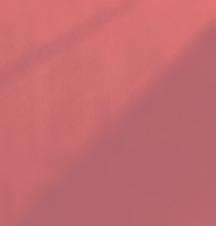


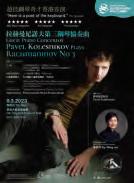















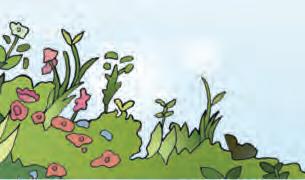
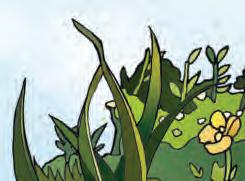



Thank you to the following donors and organisations who have supported us with a donation in the past year.
MegaSTAR Patrons (HK$500,000 and above)
• 潘燊昌博士及夫人
Dr & Mrs Patrick S C Poon
• 施永青基金有限公司
Shih Wing Ching Foundation Ltd
SuperSTAR Patrons (HK$100,000 to HK$499,999)
• 亞洲保險有限公司
Asia Insurance Company Ltd
• 北山堂基金 Bei Shan Tang Foundation
• 陳鋈鋆先生 Mr Chan Yuk-kwan
• 周莉莉女士 Ms Lily Chow
• 冼為堅基金有限公司 Sin Wai Kin Foundation
STAR Donors (HK$10,000 to HK$29,999)
•Dr Thomas H C Cheung, MH, FCII
• 鍾思源醫生 Dr Chung See-yuen
• 鍾陳碧璋女士Mrs Shirley Chung
•Dr David Fang
• 何汝祥醫生 Dr Ho Yu Cheung
•Mr Leon Ko
Donors (HK$1,000 to HK$9,999)
•BELIEVING MUSIC CAN
• 加拿大琴行 Canada Piano Co
•Mr Christopher Chan
•Ms D Chan
•In Memory of Mariette Mimi Chan
• 陳永光先生 Mr Chan Wing Kwong
• 陳燕婷
•Mr C Y Chow
•ditto ditto
•In Remembrance of Esther
•KiKi the Cat
• 許文傑先生 Mr Hui Man Kit
•Mr & Mrs Patrick Lau
•Ms Sandra W M Lee
• 王疏影及路晶珺夫婦
Amy Lo & Byron Wong
•Mrs Sophia Kao Lo
•Mrs Adeline Lui
•Ms Sophie Martineau
•Mrs Tasha Lalvani
• 林敏儀女士
Ms Man Yee Twiggy Lam
•Ms Cathy Lau Sau Kwan
•Mr Glenn Lau
•Ms Lee Yik Shuen Heidi
• 吳志強先生
•Dr Yvonne Ou
•Ms Ng Sau Pik
STARplus Donors (HK$30,000 to HK$99,999)
•Cadence, Zoe & Phoebe
• 陳嘉何醫生夫人
• 陳求德醫生及夫人 Dr & Mrs Chan Kow Tak
•Lowell & Phyllis Chang
•Chiu Music Fund
• 翟紹唐先生 Mr Jat Sew-tong
• 關卓然先生 Mr Kwan Cheuk Yin William
• 林育義醫生 Dr Lam Yuk Yee Paul
•Sophie & Chloe Ma
• 謝智剛教授 Prof C K Michael Tse
• 徐行悅醫生 Dr Michelle Tsui
• 黃偉雄先生 Mr Addy W H Wong
• 多位無名氏 Anonymous
•Cissy & Robert Tang
•Dr & Mrs Arthur Van Langenberg
•Mr Augustine Wong
•Mr Frank Wong
• 阮偉文博士 Dr Andrew Yuen
• 多位無名氏 Anonymous
• 德仔 sir
•John & Anthea Strickland
•Mr Leland Sun
•Dr Nelson Tang
•Mr Paul Tsang
•Mrs Mabel Tsui
•Ms TT Tsui
•Simon Tsui & Family
• 王偉堯先生 Mr Wang Weiyao
•Shing Chi Poon and E-wen Liao
• 潘綺勤女士
•Mr Giovanni Salce
•Ms Jojo Sin
• 王騰峰先生 Mr Wong Tang Fung
•Ms Katherine Yin
• 多位無名氏 Anonymous
香港小交響樂團對以下的捐款者及機構致以衷心謝意。
Diamond Donors (>HK$100,000)
•CLP Holdings Limited
• 潘燊昌博士及夫人
Dr & Mrs Patrick S C Poon
• 芝蘭基金會 Zhilan Foundation
Jade Donors (HK$50,000 to HK$99,999)
• 亞洲保險有限公司
Asia Insurance Company Ltd
• 阮偉文博士 Dr Andrew Yuen
• 多位無名氏 Anonymous
Ruby Donors (HK$30,000 to HK$49,999)
• 孫永輝施熙德伉儷
Edith & Stephen Sun
Opal Donors (HK$1,000 to HK$9,999)
•BELIEVING MUSIC CAN
•Ms D Chan
•Mr Chan Kwan Ho
• 紀念劉葉珍女士
• 陳鋈鋆先生
Mr Chan Yuk-kwan
• 周莉莉女士 Ms Lily Chow
• 鍾陳碧璋女士 Mrs Shirley Chung
• 潘燊昌博士及夫人
Dr & Mrs Patrick S C Poon
• 冼為堅博士
Dr David Sin Wai-kin
• 唐柏泉醫生
Dr Tong Pak Chuen Patrick
• 謝智剛教授
Prof C K Michael Tse
• 多位無名氏 Anonymous
Pearl Donors (HK$10,000 to HK$29,999)
•Mr Iain Bruce
• 張德賢博士伉儷 Dr & Mrs Douglas Cheung
•Mr David C L Chiu
• 鍾思源醫生 Dr Chung See-yuen
•Ms Fiorella Fong
• 何汝祥醫生 Dr Ho Yu-chueng
•Miss Lisa Lau
•Mr & Mrs Patrick Lau
•Mrs Florence Ng
•Ms Leta Ng
•PLC Foundation
• 沈昊翔先生 Mr Shum Ho Cheung
• 九龍倉集團有限公司
The Wharf (Holdings) Limited
• 多位無名氏 Anonymous
•Prof Yvonne Liao
• 廖炳輝醫生 Dr Liu Bing Fai
• 吳榮奎先生 Mr Ng W F Nicholas
• 魏玉華小姐 Ms Winnie Ngai
of
Recital - Piano Soirée with François-Frédéric Guy”
•Mr Y K Chan
•Ms Lily Chow
•Dr Chung See-yuen
•Dr Ho Yu-cheung
•Mr Jat Sew-tong
•Mrs Sophia Kao Lo
•Miss Lisa Lau
•Mr & Mrs Patrick Lau
•Dr & Mrs Patrick S C Poon
•Dr Michelle Tsui
•Mr Addy WH Wong
•Dr Andrew S Yuen
•Ms Jojo Sin
• Mr Jimmy Yau
• 多位無名氏 Anonymous
感謝以下各機構對香港小交響樂團一直的支持!
Thank you to the following parties for their continued support!
•Association Culturelle France Hong Kong Ltd
• 澳洲駐港總領事館 Australia Consulate-General Hong Kong
•CASH音樂基金 CASH Music Fund
• 文化體育及旅遊局 Culture, Sports and Tourism Bureau
• 法國駐港澳總領事館 Consulat Général de France à Hong Kong et Macao
• 德國駐港總領事館 German Consulate General Hong Kong
• 香港歌德學院 Goethe-Institut Hongkong
• 康樂及文化事務署 Leisure and Cultural Services Department
• 邁騰路通有限公司 Maestro GT Limited
• 荷蘭駐香港及澳門總領事館
Netherlands Consulate General in Hong Kong and Macao
•MOViE MOViE
• 通利琴行 Tom Lee Music Co Ltd
•Mr Jiˇri Votruba
